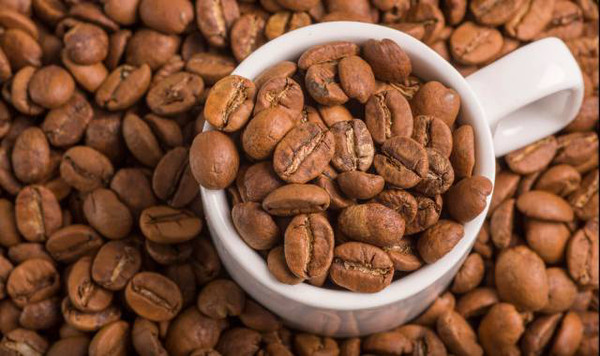Siphon barista is trained like this

Professional coffee knowledge exchange more coffee bean information please follow the coffee workshop (Wechat official account cafe_style)
According to Bernoulli's law, the velocity of siphon flow is about.
Siphon is a hydrodynamic phenomenon that can pump liquids without the aid of a pump. After the liquid in the higher position is filled with an inverted U-shaped tubular structure (called a siphon), it opens to a lower position. The liquid weight difference between the two ends of the siphon causes the liquid pressure difference, and the liquid pressure difference can push the liquid over the highest point and discharge to the low end. In May 2010, Dr Dr Stephen Hughes, Queensland University of Technology, Australia, said: "it is gravity that causes the liquid in the siphon to flow, and the water at the lower end of the long tube pulls the water from the short upper end up to the lower end." [1]
The Jiulong cup of ancient Chinese wine ware is made by siphon principle.
At the opening (A) of the upper end of the siphon, the pressure into the pipe is the hydraulic pressure of the container formed by pushing the upper end water to the position where the pipe mouth is immersed by gravity, and the outward pressure is the pressure produced by the liquid column in the uphill section. When the former is larger than the latter, the liquid is pushed from the upper container to the lower container, forming a siphon [2]. The liquid pressure difference is caused by the liquid falling to the outlet end, that is, the gravity at point C leads to the negative pressure at point B, and then the hydraulic pressure difference combined with atmospheric pressure promotes the liquid flow. In general, the driving force of siphon is atmospheric pressure; but in special cases, other principles will also be the driving force. Under laboratory conditions, some siphons are used to display in a vacuum environment, indicating that the tensile strength of the liquid has a certain contribution.
The most common siphon phenomenon uses water as the siphon liquid, but mercury is often used in experiments, and other substances such as organic solutions and even carbon dioxide can be used in siphon experiments [3].
Stop condition
The principle of the siphon ascent phase is similar to that of the barometer, where the air pressure pushes the liquid upward into the lower-pressure top part of the pipe. Because of the similar principle, the maximum height at which the liquid in the siphon can rise is consistent with the barometer. With the increase of the uphill height, the outward pressure of the pipe mouth also increases; when it is balanced with the hydraulic pressure of the container produced by gravity, a partial vacuum will be created at the top of the siphon, which will further cause the liquid column to collapse and the siphon phenomenon to stop.
In addition, if the liquid level of the container at both ends of the siphon reaches the same height, the siphon phenomenon will stop.
Important Notice :
前街咖啡 FrontStreet Coffee has moved to new addredd:
FrontStreet Coffee Address: 315,Donghua East Road,GuangZhou
Tel:020 38364473
- Prev

What is the taste of Yunnan Pu'er Coffee? introduction to Pu'er Coffee Manor
Professional coffee knowledge exchange more coffee bean information please follow the coffee workshop (Wechat official account cafe_style) Yunnan borders Vietnam, Laos and Myanmar, with an average elevation of more than 2000 meters, with the climate and altitude conditions for growing high-quality coffee. In Yunnan coffee, the most famous small seed coffee in Simao, Pu'er City, is Pu'er coffee. Pu'er coffee has been around for a hundred years.
- Next

Follow-up to the incident that the women's coffee shop took photos without ordering and was charged: the merchant refunded the photo of the woman.
Professional coffee knowledge exchange more coffee bean information please follow the coffee workshop (Wechat official account cafe_style) to enter the shop without ordering, but is charged 50 yuan to check out? Recently, the fact that a woman in Liuzhou, Guangxi was charged 50 yuan for taking photos in a coffee shop without ordering an order has gone viral on Weibo. February 18, Yufeng District Branch of Liuzhou Municipal Administration for Industry and Commerce
Related
- Why are the coffee in some coffee shops not enough after being frozen? What should I make up for my American latte cappuccino coffee after being frozen?
- How much water does it take to steam coffee by hand? Why is the coffee brewing and steaming time 30 seconds? What is the purpose of steaming coffee?
- The suspected drink contains too much caffeine! Overlord Tea Lady responds urgently!
- Starbucks rejects antique paper coupons?! Netizen: Missed marketing opportunities!
- What ratio of water temperature and ground does the smart cup method use to press coffee? The difference between brewed coffee and filtered coffee?
- What is the standard process for the purpose of coffee cup testing? What is the difference between hand-brewed coffee and cup testing?
- How to use hand-brewed coffee paragon small golden balls? How does cold coffee lock in the aroma of coffee?
- Is American coffee black? What is the difference between American coffee and drip coffee?
- Unexpected! Well-known tea beverage brand Lele Tea will withdraw from the Zhengzhou market!
- Starbucks enters the fashion and beauty industry?! Netizen: Give me an ice American eye cream

